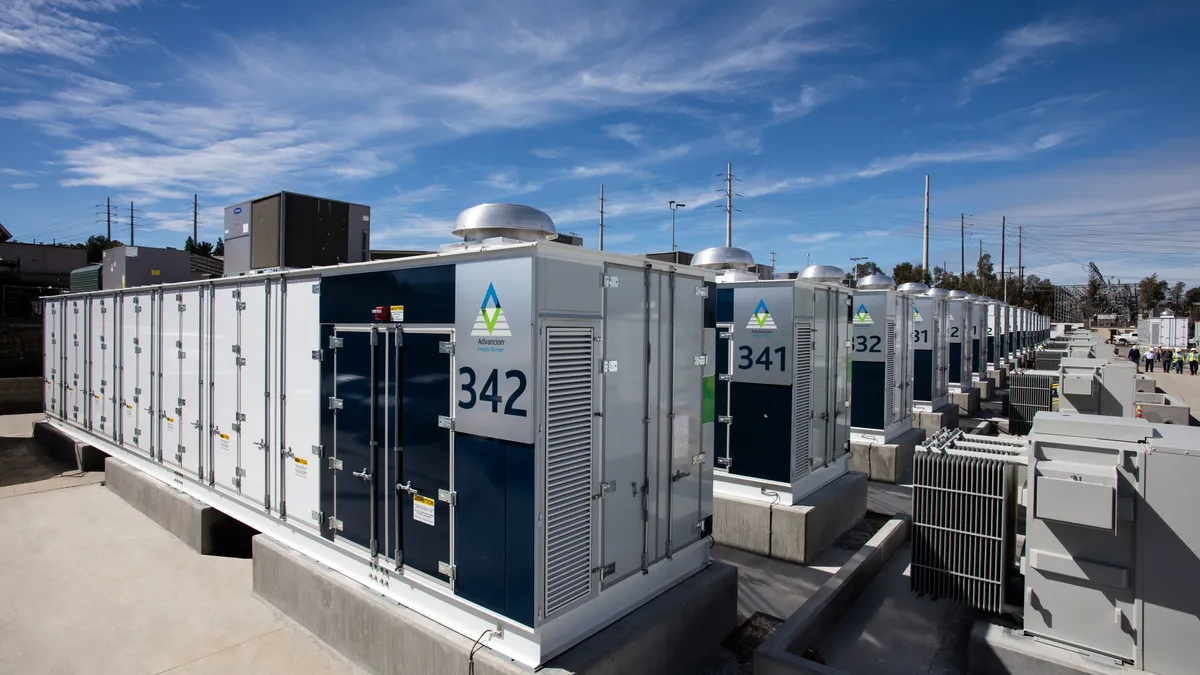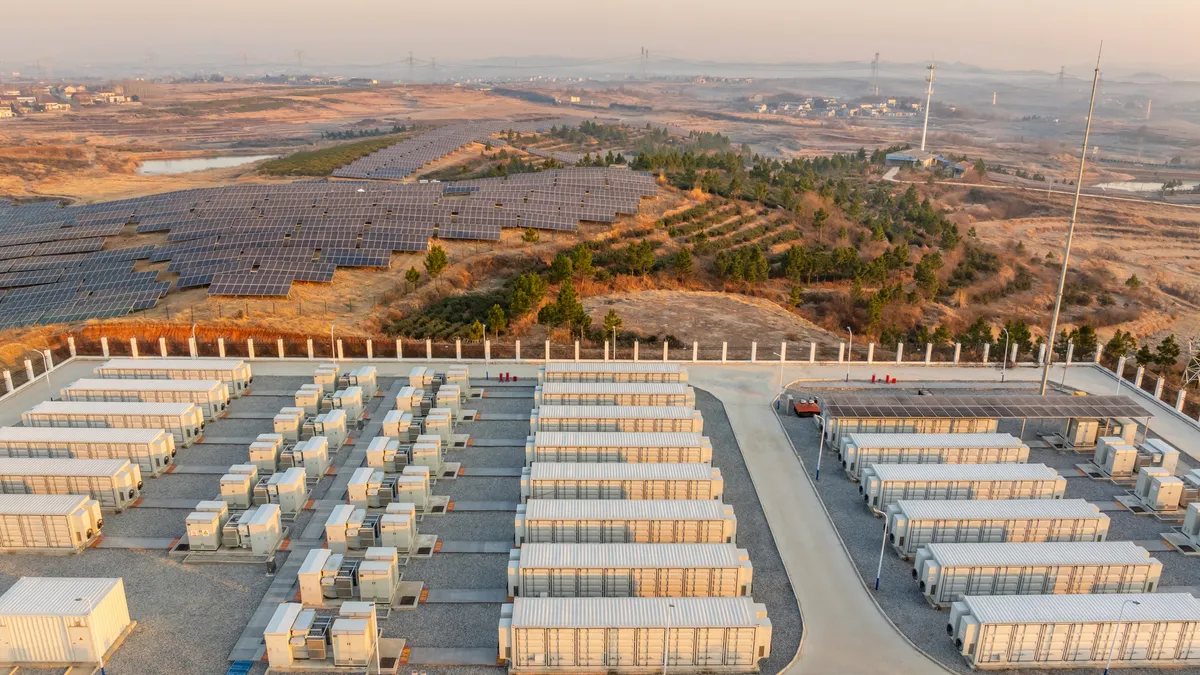In a famous children's fable, a stuffed rabbit becomes real when its owner believes in it.
The nation’s utilities may now be similarly transforming battery energy storage.
The U.S. utility-scale battery storage installed capacity grew by another 221 MW in 2016 as costs continued to drop, according to a recent report from GTM Research and the Energy Storage Association.
More importantly, the sector last year doubled the amount of megawatt-hours (MWh) of battery capacity deployed compared to 2015.
This, analysts say, shows growth in the use of long-duration batteries and an increased confidence that the large energy storage facilities can be used to help manage peak demand.
“Growth remains steady, but 2016 was a turning point because the PJM frequency regulation market faded while demand for 4-hour duration storage capacity grew,” said report co-author Dan Finn-Foley, a GTM Research senior energy storage analyst.
The longer duration capacity growth was largely from California battery storage projects, Finn-Foley said. They were brought online in 2016 to address power grid needs created by the shutdown of the Aliso Canyon natural gas storage facility due to a methane leak in 2015.
Those batteries were rushed online to provide peak demand electricity that local power plants could not supply without natural gas from the Aliso Canyon facility. They represented 60 MW of the 221 MW added last year, but accounted for 168 MWh of the total 336 MWh deployed in 2016, according to Finn-Foley.
“With a 4-hour duration battery, a 20 MW energy storage system can deliver 80 MWh of capacity to meet a peak demand spike," he said.
The fast deployment of those California grid-scale batteries — all sited, constructed and put into operation in nine months — has a number of analysts and sector insiders touting 2016 as a “turning point” for energy storage. But others say the true storage revelation is yet to occur, as utilities discover how to better capture the multiple values of storage.
“The watershed event for energy storage will be when we can unlock multiple value streams from batteries,” said Stuart Laval, director of technology development at Duke Energy.
Long-duration storage, by the numbers
If there was a turning point for storage, it came in the fourth quarter of 2016, when 213 MWh of the year’s 336 MWh went online, according to the U.S Energy Storage Monitor from GTM and ESA.
Much of that capacity came from projects already in planning to meet California’s 1,325 MW energy storage mandate. They were hurried online in response to the Aliso Canyon emergency, with California regulators approving an expedited storage deployment in May 2016.
Those California 4-hour duration batteries, including installations from Tesla, AES and Greensmith/AltaGas, represented 88% of the Q4 additions.
Largely because of the mandate, GTM energy storage director Ravi Manghani expects the state to continue to lead U.S. energy storage deployments. The report forecasts annual deployment to reach 2.6 GW and 7.3 GWh in 2022.
Despite falling costs and the slight dip in total MW year-on-year, the MWh increase drove the market’s revenue “slightly higher” than in 2015, the GTM report noted. It forecasts a ten-fold revenue increase by 2022 to $3.3 billion, with cumulative 2017-2022 storage market revenue rising to over $11 billion.
Lithium-ion chemistry was “at least 97% of all energy storage capacity deployed in 2016,” the report noted. Drivers include “massive declines” in price and “growing acceptance of the technology’s bankability” — a trend that is “expected to continue.”
Behind-the-meter residential and non-residential storage was 6% of MW and 7% of MWh deployed last year. The residential segment grew slightly over 2015 while the non-residential segment fell somewhat. Overall, the behind-the-meter market in 2016 grew 15% in MWh over 2015.
The behind-the-meter storage numbers represent an uptick installed capacity over 2015, GTM report co-author Brett S. Simon told Utility Dive. But it did not have “the paradigm shift from short duration to longer duration storage seen in the front-of-the-meter segment."
A turning point?
Almost four of five utility professionals (78%) responding to Utility Dive’s State of the Electric Utility 2017 survey expect utility-scale storage to increase moderately or significantly on their systems.
But from mostly nothing to a little something is not a turning point, and insiders remain divided on whether 2016 was a true milestone for the industry.
If there is a turning point, it may be in the way utility planners think about "the speed with which energy storage can be deployed,” said Southern California Edison contract origination director Mark Irwin.
The sheer speed at which the Aliso Canyon batteries were deployed for SCE and others show that California utilities have discovered the essential battery storage value proposition, said Janice Lin, executive director of the California Energy Storage Alliance (CESA), a trade group.
“It can be a no-regrets, go-to resource app,” Lin said. Whether due to a gas shortage, weather-related outage, or growth of distributed generation, storage can allow utility planners to “avoid a huge expenditure for a peaker plant that could turn out to be an overbuild.”
Stem, Inc., a leading provider of battery storage and battery storage management, bases its business model on allowing utilities to avoid those large plant investments.
Even so, Polly Shaw, vice president for regulatory affairs at the company, is skeptical that utilities outside the Golden State have caught on yet.
The Aliso Canyon-driven activity “was a turning point for storage in California,” Shaw said. But nationally, utilities simply “became more interested.”
Duke Energy’s experience in storage substantiates the observations from Shaw and its own Laval. The company, one of the largest utility holding firms in the U.S., is mostly invested in pilot projects and batteries with limited market functions. It has yet to realize the “multiple value streams” of batteries highlighted by Laval.
Duke's short duration battery storage systems in Texas and Ohio are limited to the ERCOT and PJM frequency regulation markets, for instance. Projects in North Carolina and Indiana are limited to kW sizes and are linked to distributed energy resource pilot installations.
These projects were deployed to allow the utility “to better understand how energy storage fits,” according to Duke’s website. Its $1.5 million Battery Innovation Center in Indiana is focused on how “to advance energy storage research, particularly as it applies to homes and communities,” the website adds.
In the PJM market, the story is much the same, according to Andrew Levitt, senior strategist at the grid operator.
PJM’s average battery duration is rising slightly, he said, a trend he called “notable, if not especially surprising,” but not a real turning point.
If the watershed moment will come when storage costs fall enough to drive rapid scaling outside niche areas, “we are definitely not there,” Levitt said. “If turning point means there is lots of political momentum nationwide for storage, we appear to be there.”
Curt Kirkeby, an engineering fellow at Northwest utility Avista, agreed that economics remain an important limiting factor. For behind the meter storage, “the business case will be location-specific and customer-specific.”
In its commission-regulated integrated resource planning (IRP), utility-scale storage is “at the bottom of the economical scale” because it does not meet the “least cost” standard, he added. Avista’s Pullman Energy Storage System pilot is an effort to understand how as yet unmonetized distribution values can be considered “on an even playing field.”
Energy storage is still primarily about economics, he said. “There has to be multiple value streams that meet hurdle rates and are considered reliable returns over time.”
The ‘huge’ change needed in utility planning
Since the Aliso Canyon methane leak in late 2015, SCE and San Diego Gas and Electric (SDG&E) “have completed seven out of eight Aliso Canyon-related projects,” the CAISO market monitor recently reported. Only 5 MW of the contracted 104.5 MW has not come on-line.
“The timing for the Aliso Canyon procurement, from the order to procure to operations, was less than nine months and included little to no pre-planning,” SCE’s Irwin said. “This short deployment timeline will likely help utility planners manage load forecast uncertainty and the long timeline required for most resources.”
CESA’s Lin emphasized this short deployment timeframe as a storage characteristic that could drive more installations even in
“Storage can be deployed fast enough to handle swings in load so that it is not necessary to overbuild traditional generation,” she said.
Before utilities recognized that battery energy storage is rapidly deployable and reliable, they had to plan four or more years ahead to meet any anticipated system, Lin said. If a long-term forecast showed the need for generation to meet load, planners understood it would take years to site, permit, build, and interconnect a new power plant.
Recent events have shown how uncertain and potentially costly to ratepayers planning can be. Load uncertainty is becoming almost a certainty, driven by economics, pollution shifts and growth in distributed energy.
Yet the mandate on utilities for reliable service inclines the planning process “to huge lumpy investments that are expensive and risky for ratepayers,” Lin said. “Storage is a no-regrets decision for the exact amount of MW needed in the near term. That can significantly reduce forecast error risk.”
Both new battery energy storage systems and natural gas peaker plants are expensive, she said. But storage allows a smaller build for the short term that does not require costly oversizing in anticipation of future needs.
“On the other hand, battery storage is modular so it can be expanded if the need to meet a bigger load materializes,” she added. “As we saw in Southern California, it is also a way to respond quickly and cost effectively to unanticipated supply emergencies.”
This just-emerging realization, based on the experience of California’s IOUs, can be a template for other utilities and other states, Lin said. But it presents a “huge” difference in the way planning has traditionally been done and it is unlikely to be done effectively by a utility that has not procured storage in the past.
Battery storage “is a totally new and different resource and requires planning experience,” Lin said. “That is why policies that lead to learning by doing are so important.”
In California, policy-driven procurements have been made and projects are in place, she added.
“Storage is becoming a part of the regular toolkit. To make this potentially lower cost asset class part of the regular toolkit in more jurisdictions, you need a policy driver in place to make sure utilities begin the learning process.”





















